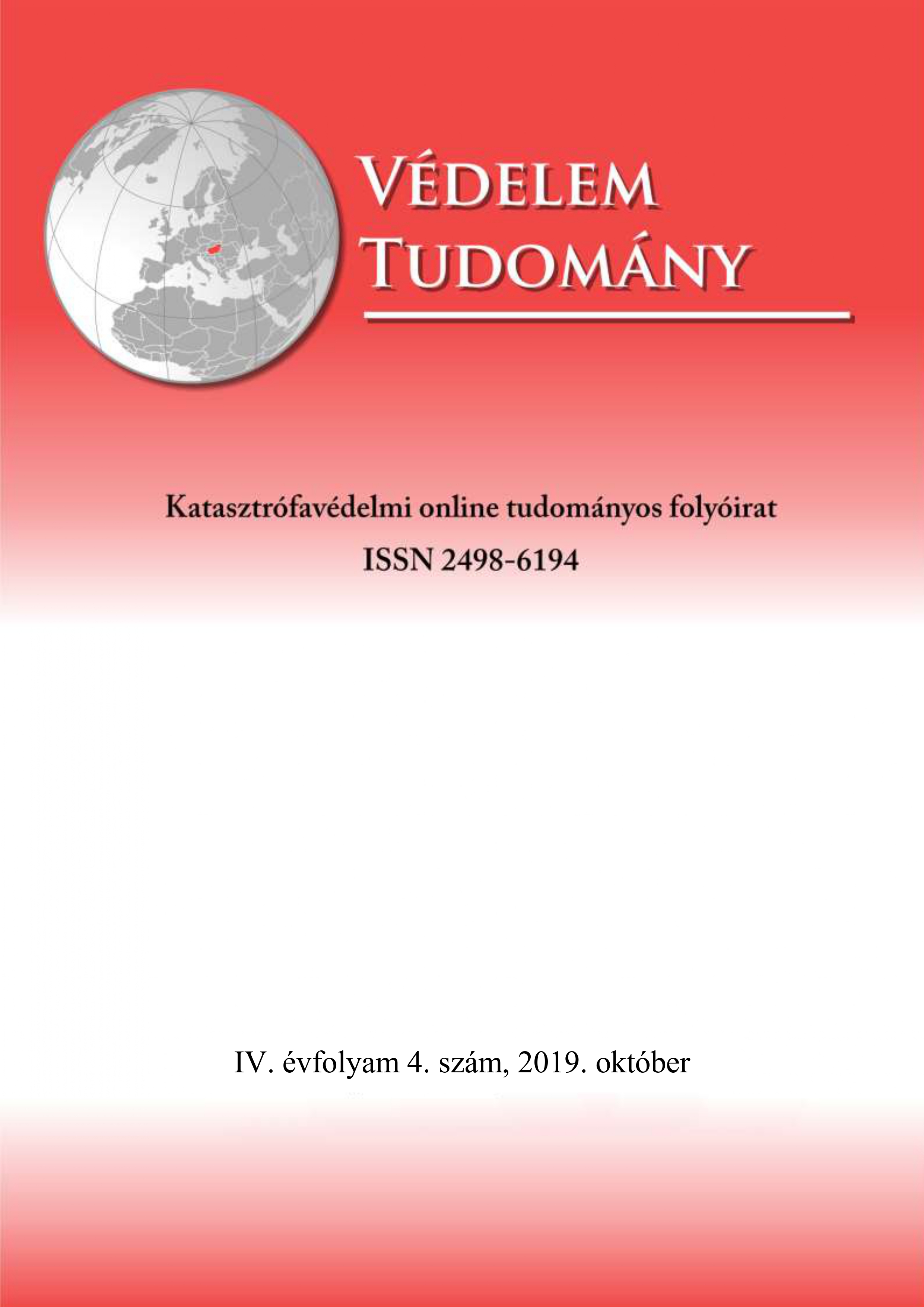the BIM and the fire protection part I.
Abstract
The complex needs of the buildings in the XXI. century, the constantly renewed technical solutions, and the dynamic variable use of the buildings lay the issues of the fire safety of the buildings on a new foundations. The size (height, floor area, quantity of people, etc.), the design, the use of the buildings determines the entire life cycle of the building the risks, and the required fire protection equilibrium involved in the building – human – fire interactions. The innovative fire protection solutions based on evaluative, analytical methods of exact theories, wich based on technical approaches could be summerized in the method of building information modelling. We can identify equilibrium situations in the life cycle of a building, in the ever-changing fire situations depend on the risks and fire protection evolvings, wich ensure long-term sustainable security, subject to appropriate spatial analysis. In the publication I analyze the implementation of complex fire protection across the full life cycle of buildings. I introduce the potential development opportunities lying in complex fire protection based on with BIM applications created innovative engineering methods, and also in fire protection net which covers the entire life cycle of buildings, which enable us to realize a new, high-level long-term sustainable safety apropos of smart buildings. In the first part of the
article I summarize the basics of BIM methods in the field of fire protection. In the second part of the publication, I evaluate the potential, longterm benefits, and current difficulties of the BIM method for fire protection.
References
Aktas C. B. – Bilec M. M.: Impact of lifetime on US residental building LCA results, Buildings and building materials, 2012. pp. 24-28.
Östman, B., Brandon, D., Frantzich, H.: Fire safety engineering in timber buildings, Fire Safety Journal 91 (2017) pp. 11-20.
Maliosz M.: Felhő alapú hálózatok, http://www.tmit.bme.hu/vitmma02-2015 (A letöltés dátuma: 2016. 03.18.)
Hurley, M.: SFPE Handbook of Fire Protection Engineering, 5th edition, Springer, ISBN-13: 978-1493925643
Fritts M.: A BIM jövője, http://mabim.hu/a-bim-jovoje/ (A letöltés dátuma: 2016. 04. 30.)
Grant, C. E., Pagni, P. J.: Fire Safety Science, Hemisphere Publishing Co., 1986.
Law, A.: The role of modelling in structural fire engineering design, Fire Safety Journal 80 (2016) pp.89-94.
Kerekes Zs.: Az építőanyagok új „Euroclass” szerinti tűzveszélyességi minősítése és hazai bevezetése, Tudományos Közlemények, Szent István Egyetem YMMFK 5:(1) pp. 47-57. (2008)
Szabó A., Beda L.: Modelltűz-választás valós méretű tűzoltási modellhez, Védelem Katasztrófavédelmi Szemle 21: (6) pp. 19-21.
Bérczi L.: A tűzvédelmi szervek felépítése, szervezete és feladatai Magyarországon, Védelem Tudomány, I. (2) 2016. pp. 3-18.
Schneider, U., Kolb, T.: Ingenieurmethoden im Baulichen Brandschutz, Expert-Verlag, 2017., ISBN: 3816933458
Magyarország alaptörvénye (2011. április 25.). https://www.net.jogtar.hu/jr/gen/hjegy_doc.cgi?docid=A1100425.ATV. (letöltés dátuma: 2016. 10.11.)
Bérczi L.: Structure, organization and duties of fire services in Hungary, Védelem Tudomány: Katasztrófavédelmi nline Tudományos Folyóirat I. (2) pp. 3-18. 2016
Restás Á.: A tűzoltásvezetők döntései – elméleti szempontból, Védelem - Katasztrófa Tűz- és Polgári Védelmi Szemle 20: (3) pp. 5-10.
Érces G. – Restás Á.: Infocommunication Based Development Opportunities in the System of Complex Fire Protection, In: Branko Savić, Verica Milanko, Mirjana Laban, Eva Mračkova, Restás Ágoston, Branka Petrović (szerk.) Book of Preceedings: МЕЂУНАРОДНА НАУЧНА КОНФЕРЕНЦИЈА БЕЗБЕДНОСНИ ИНЖЕЊЕРИНГ. 530 p., ISBN:978-86-6211-106-7
ÁBRA: Innovatív mérnöki tűzvédelem (készítette a szerző)
Mohai Á., Beda L.: Gondolatok a tűzjelző berendezések hatékonyságáról, Védelem Tudomány, I. (4) 2016. pp. 1-12




